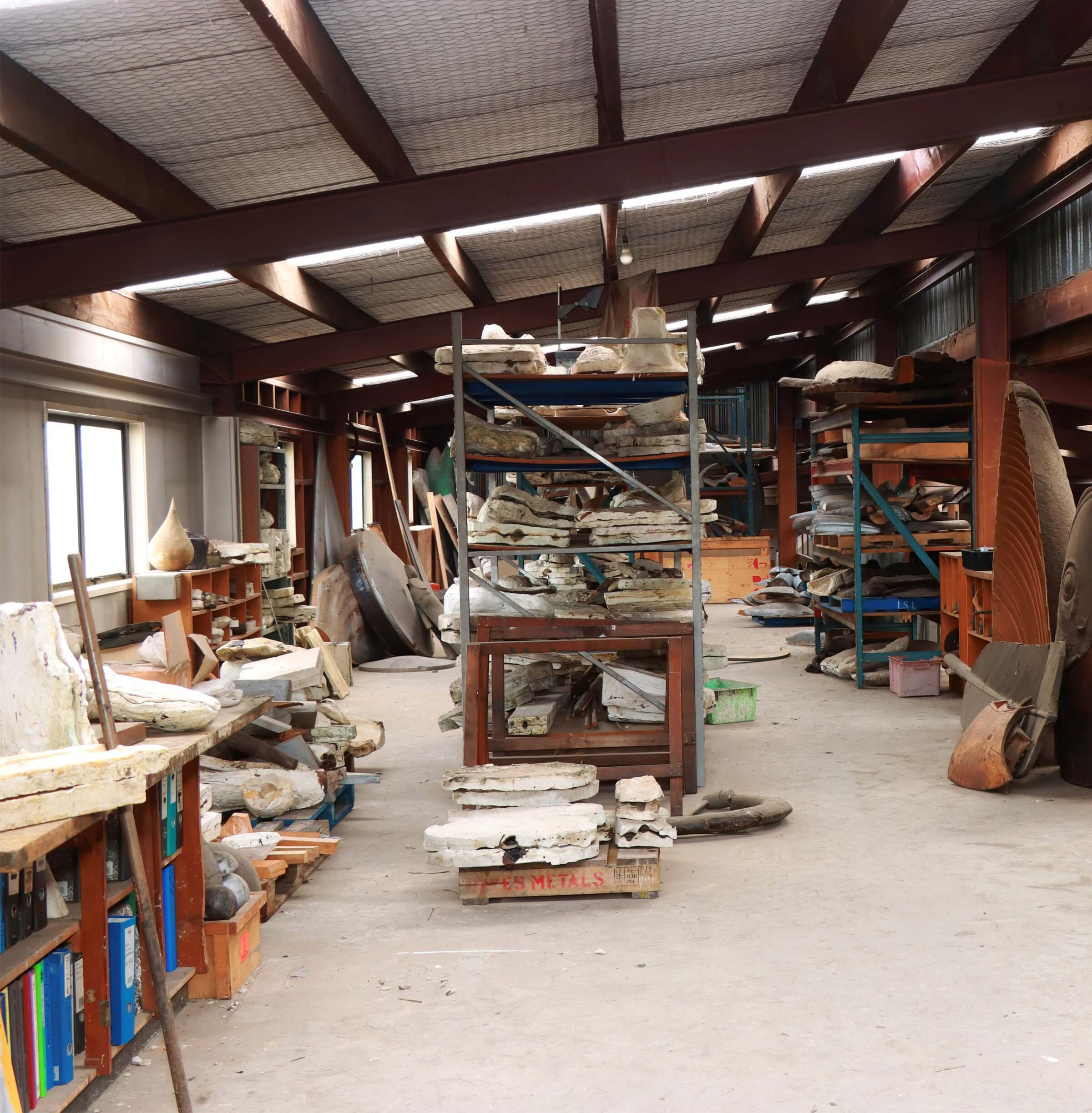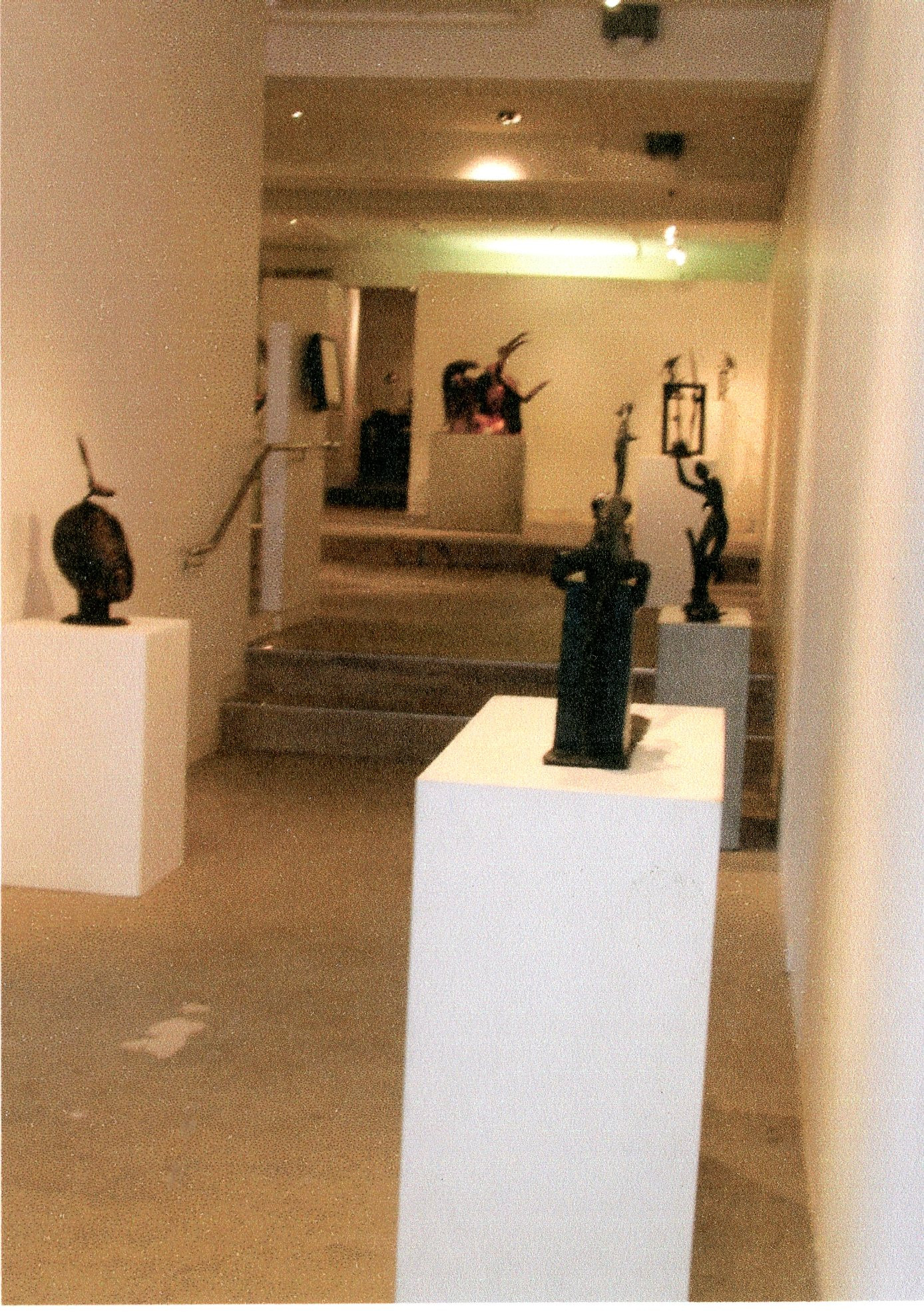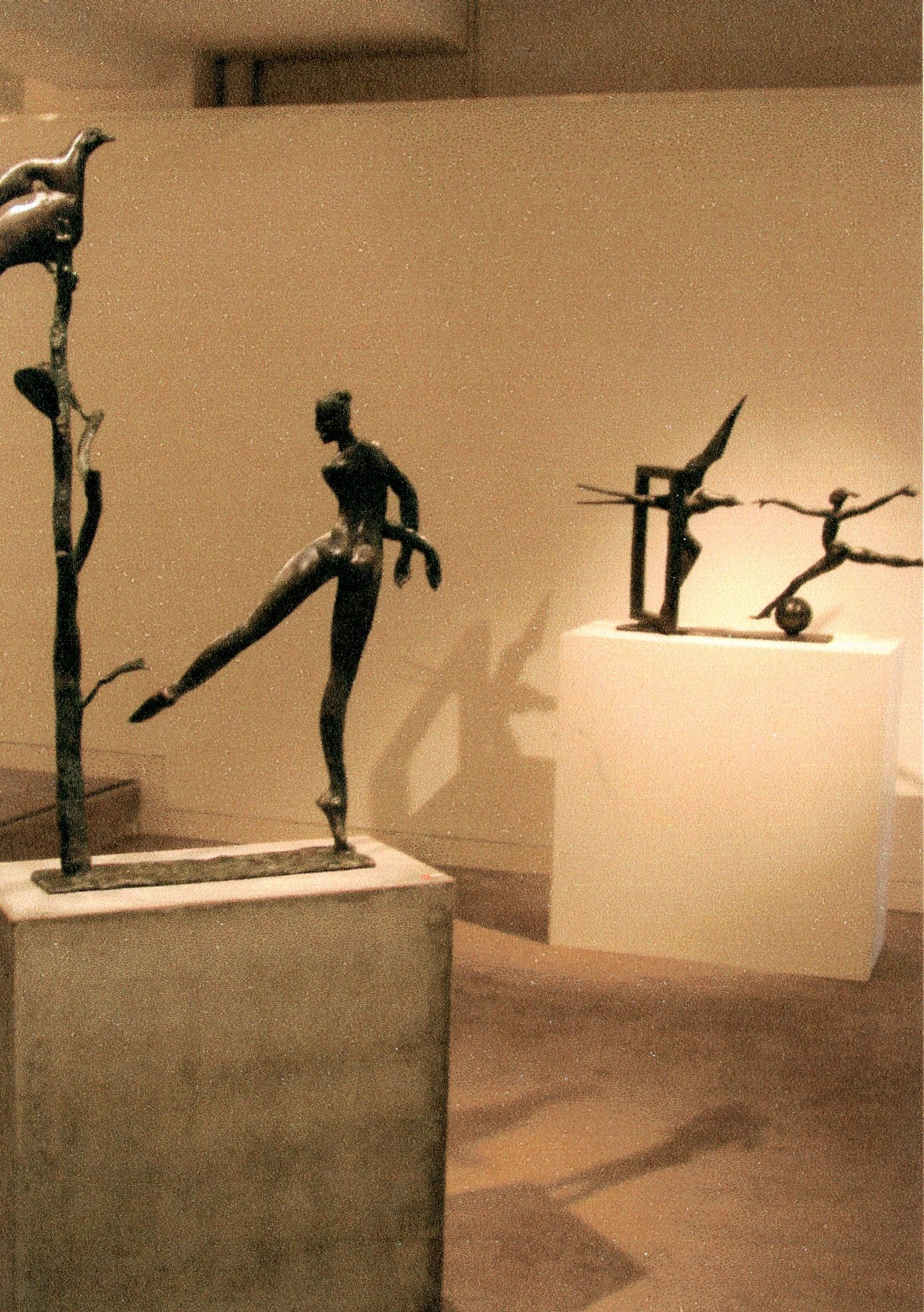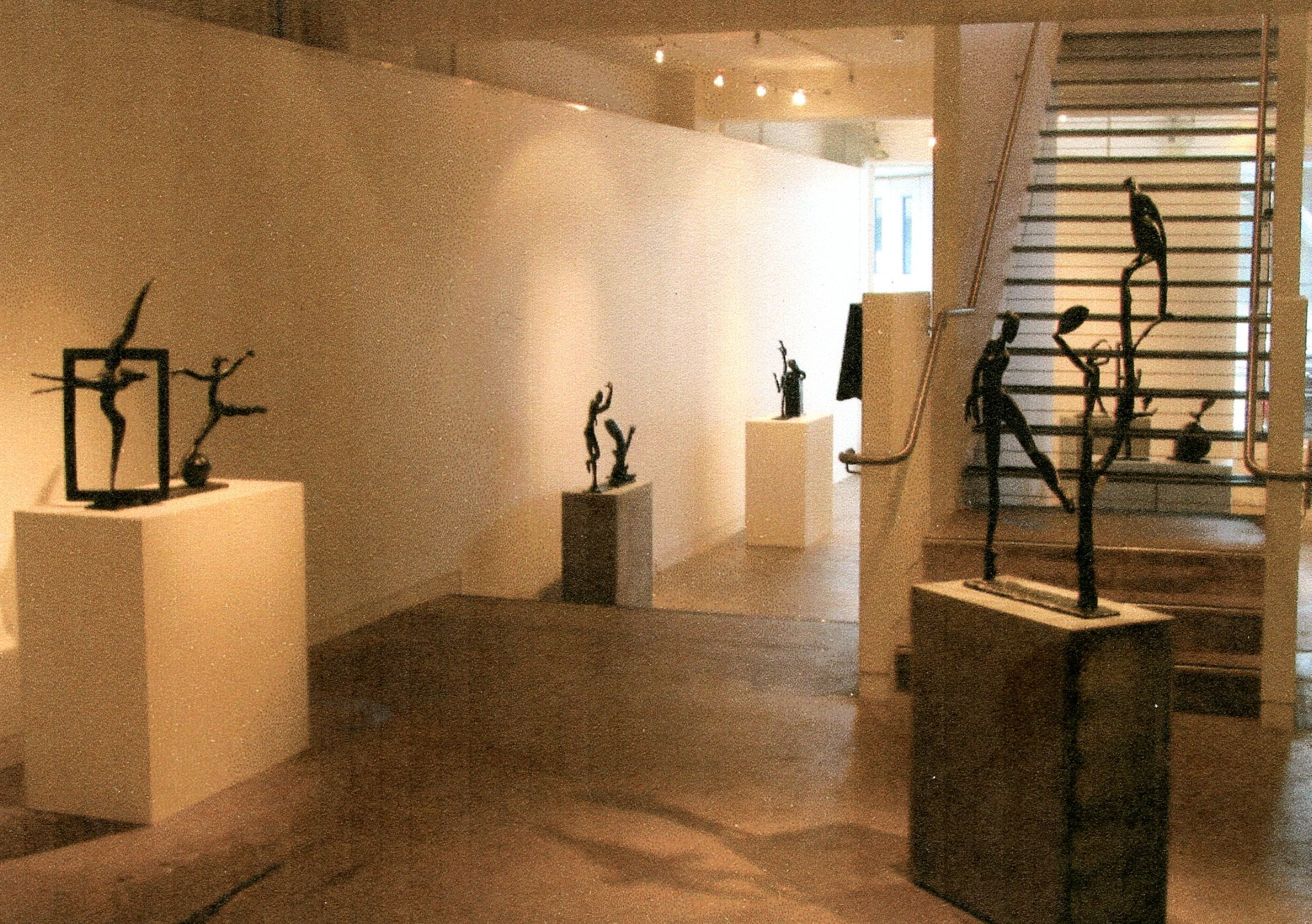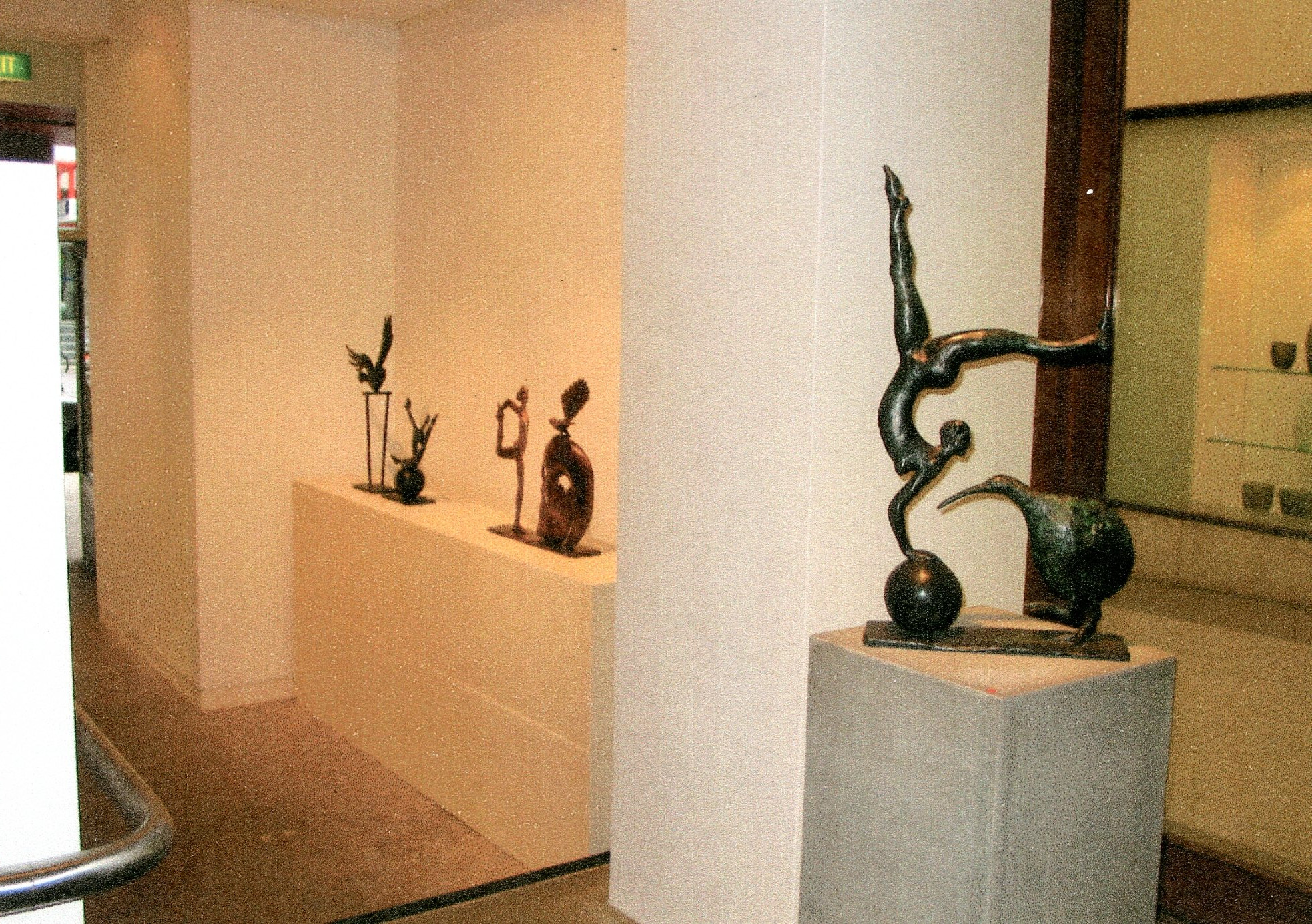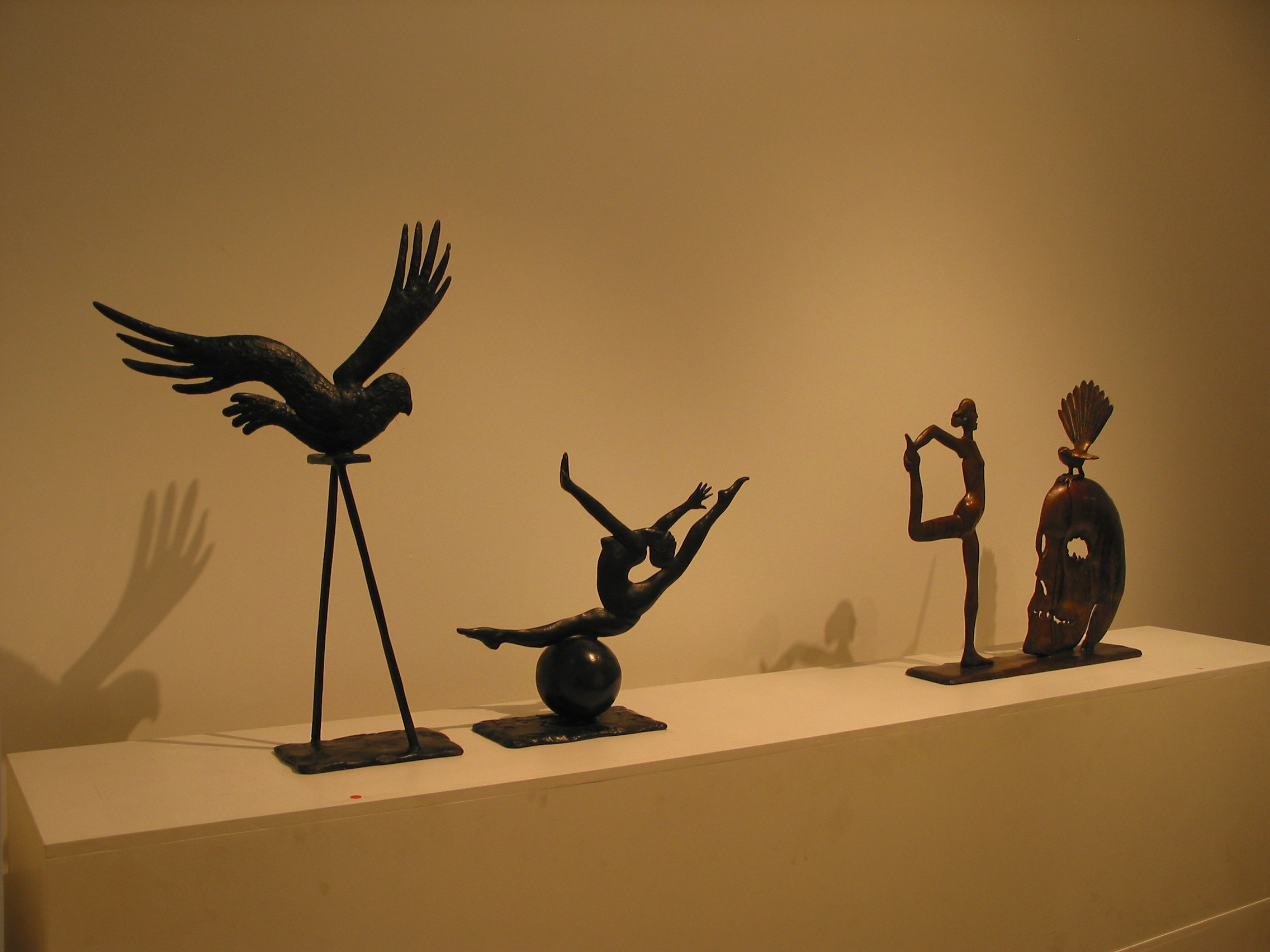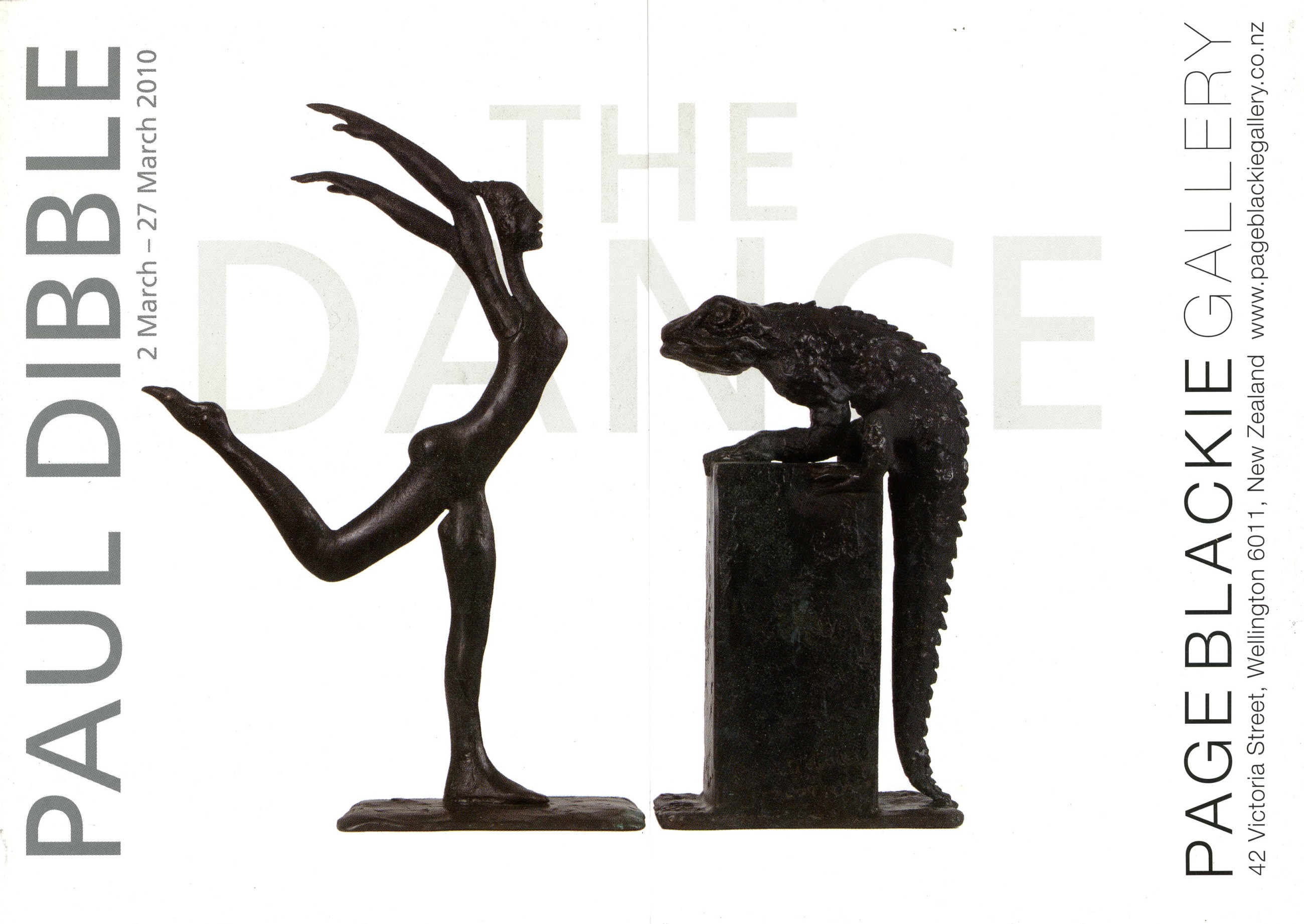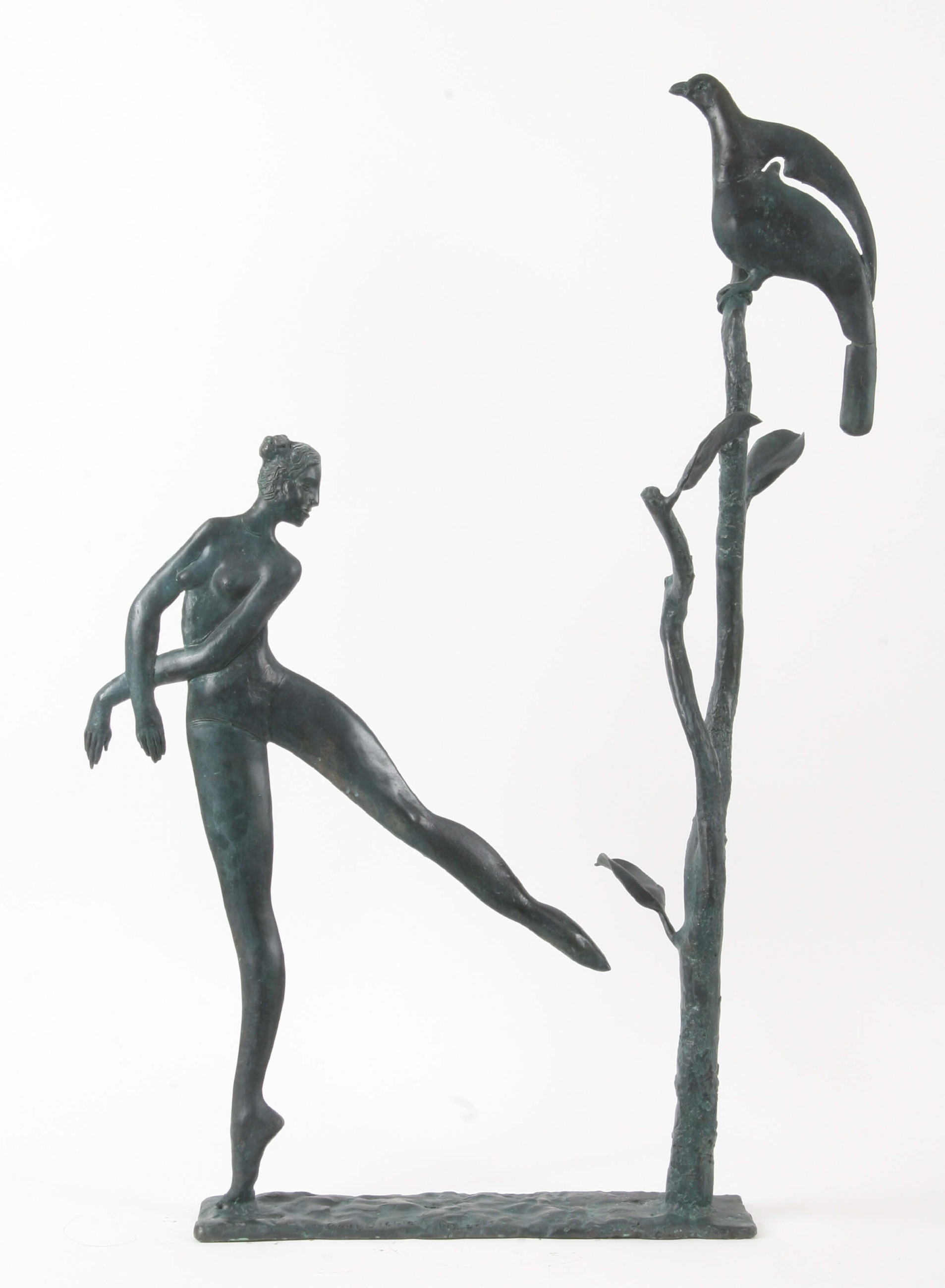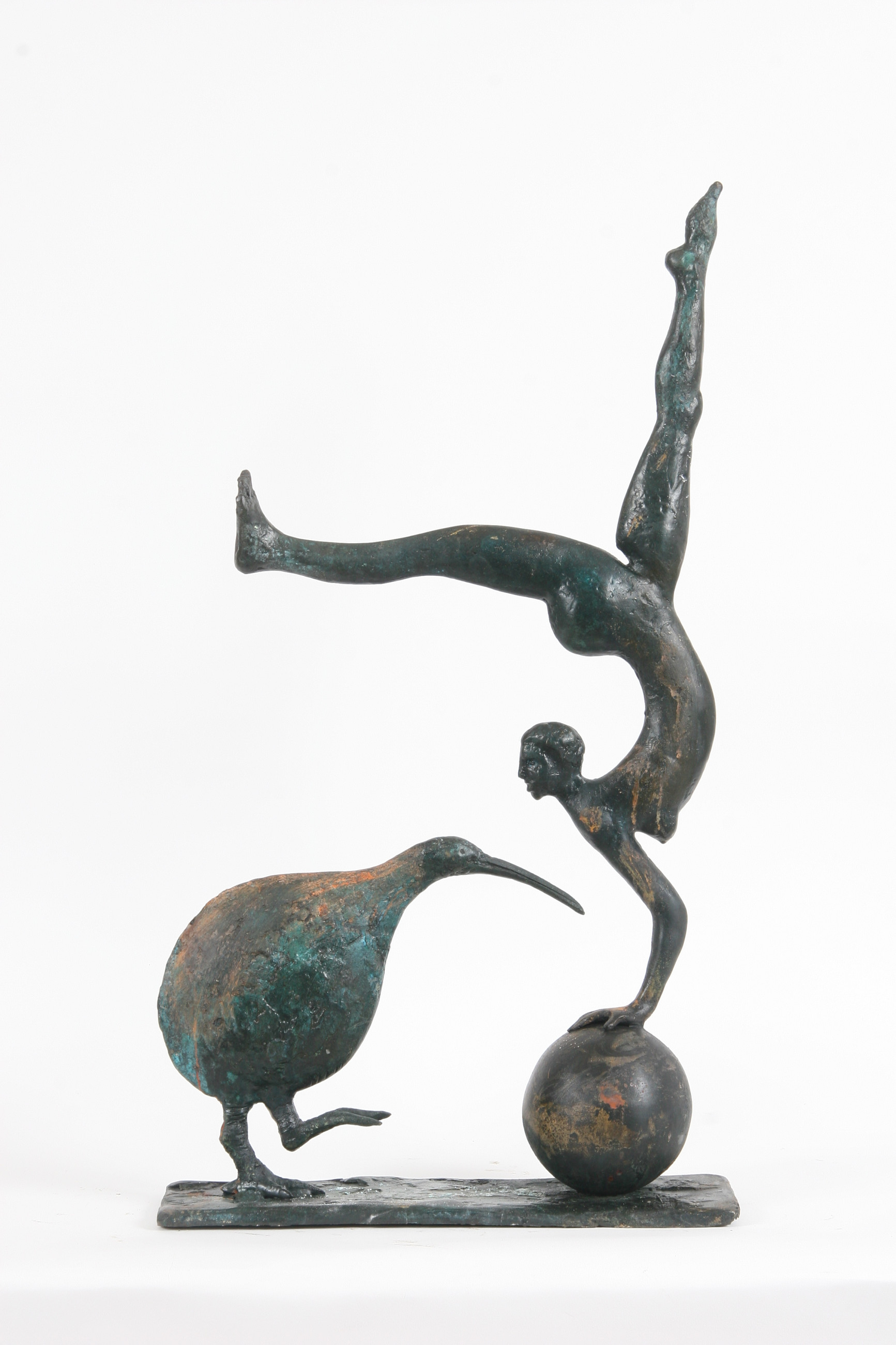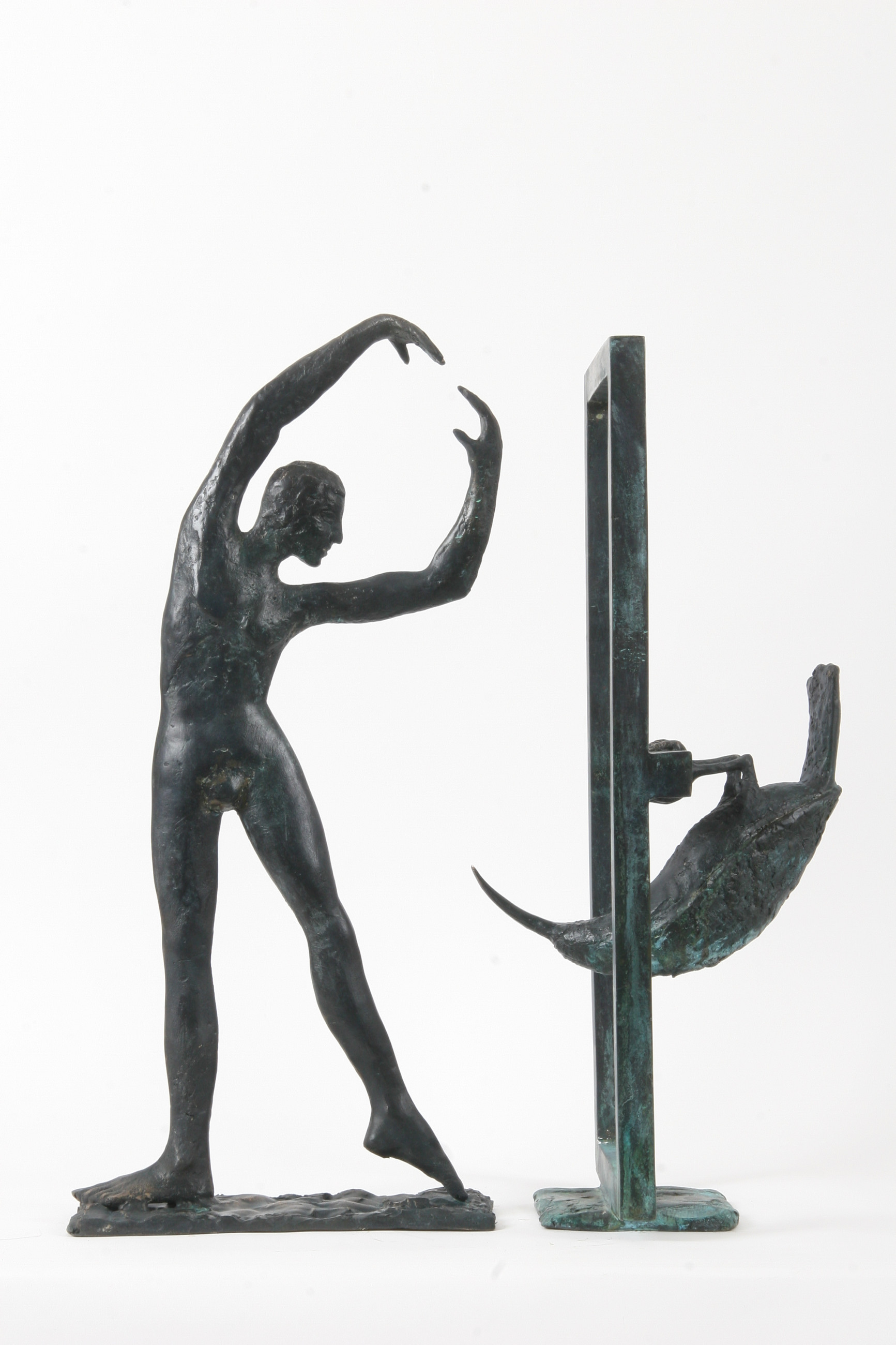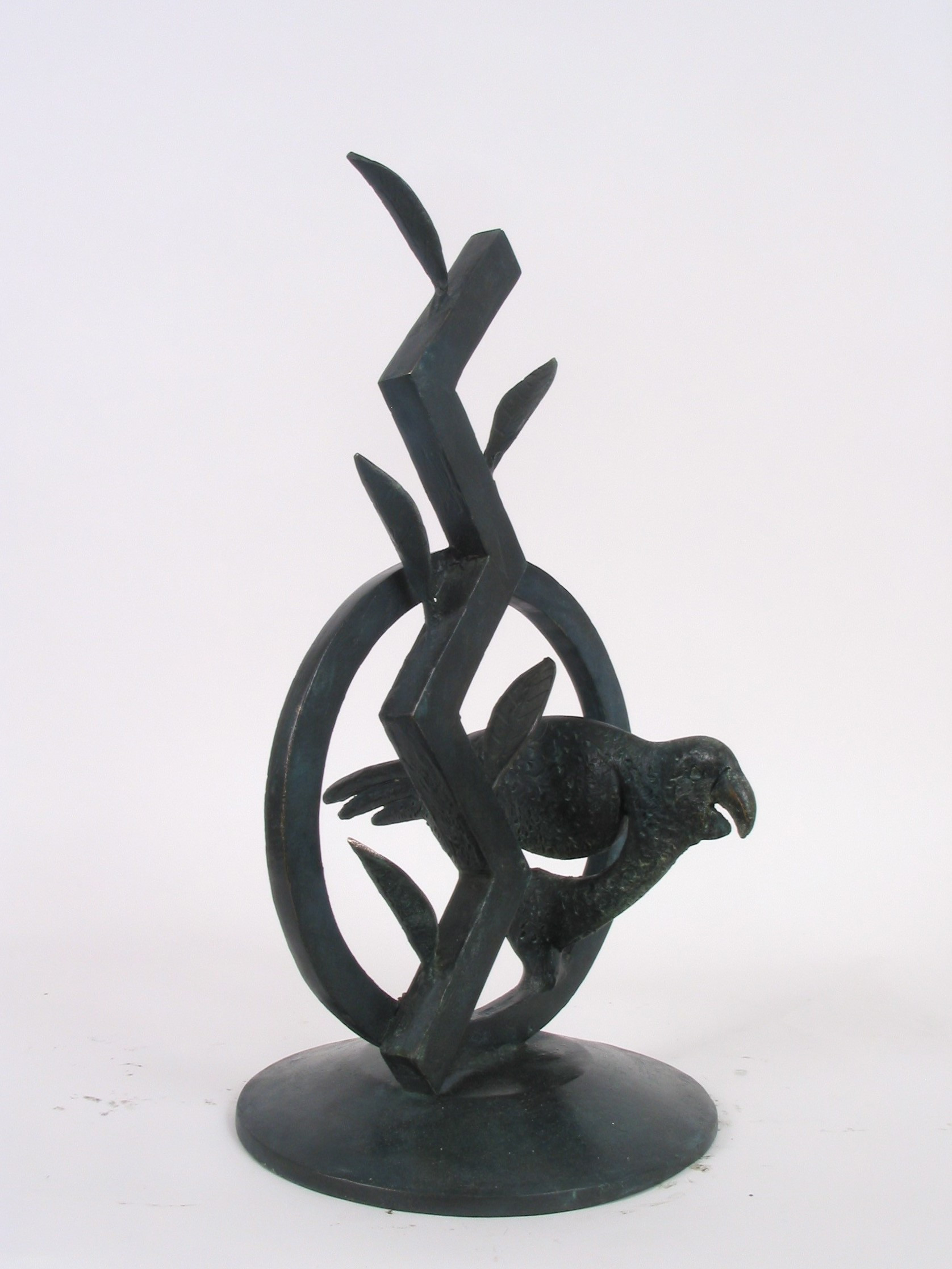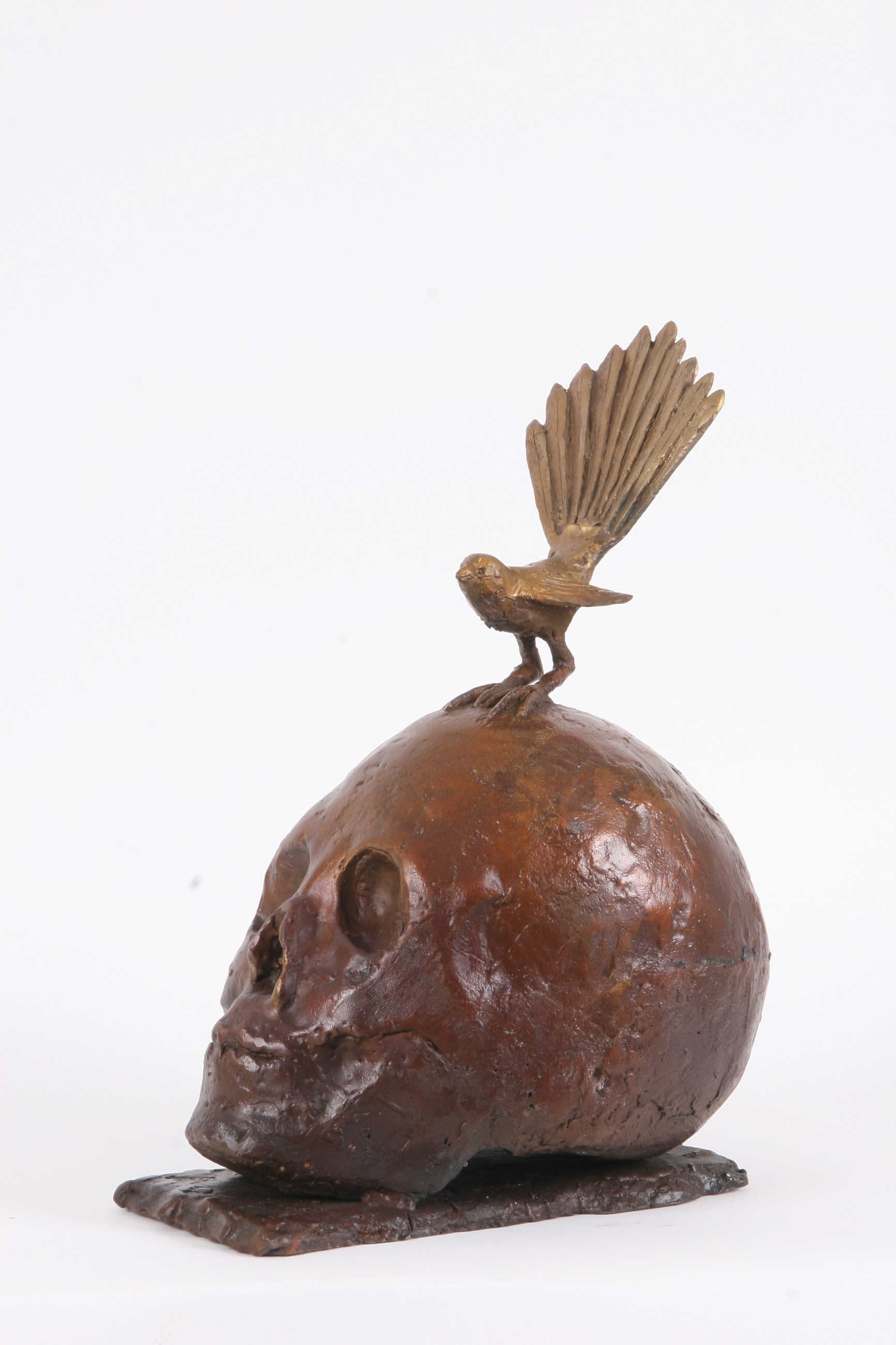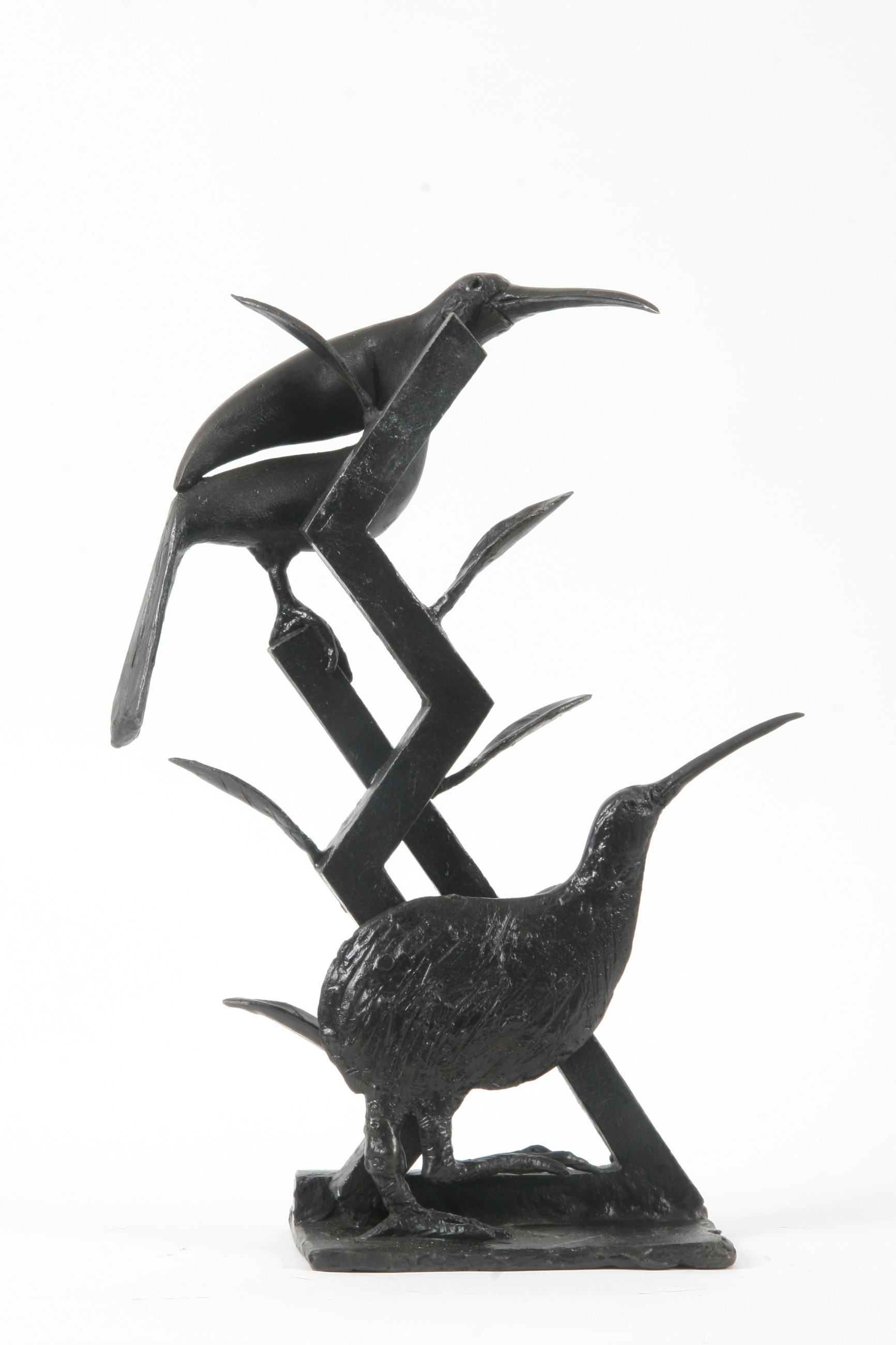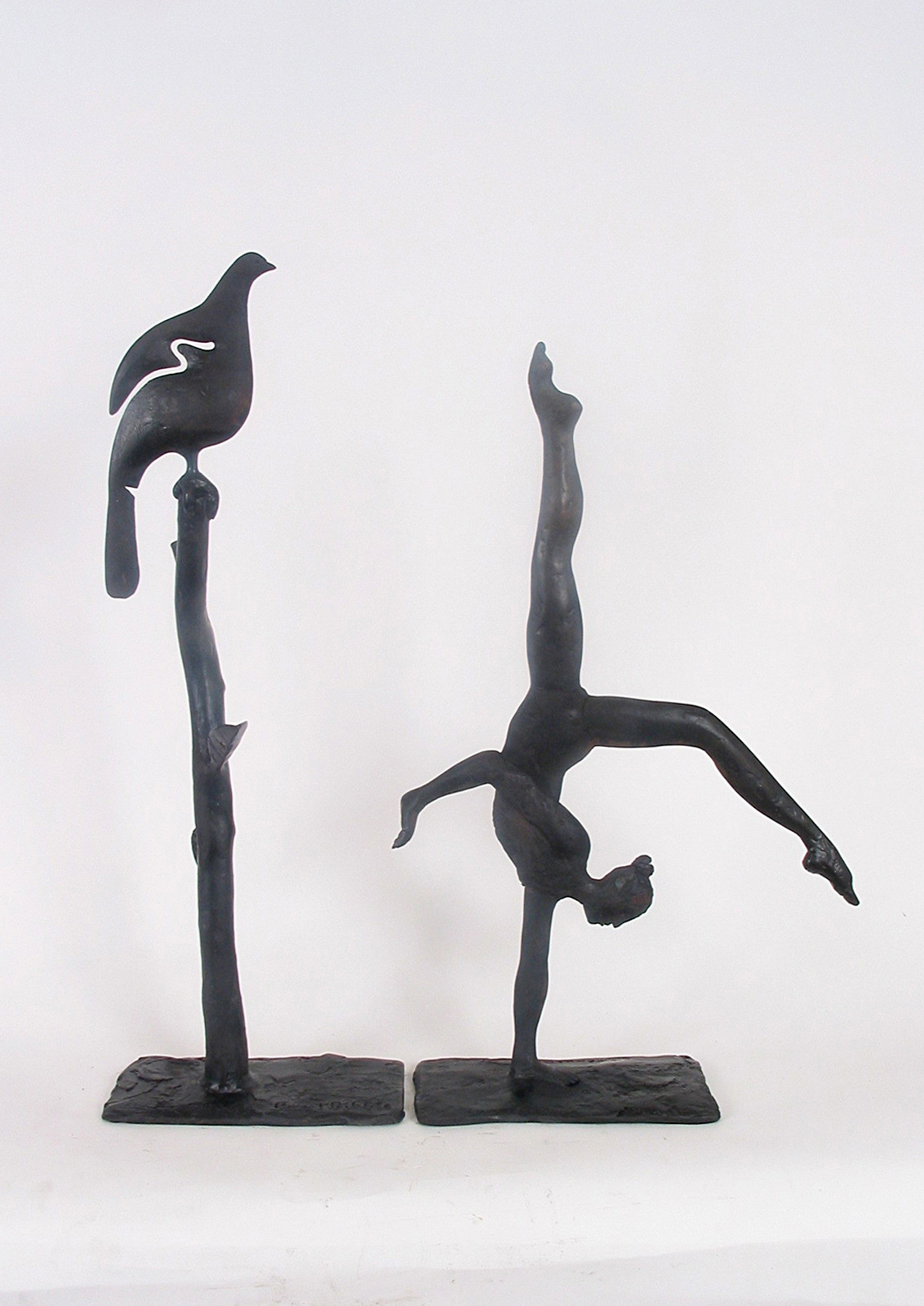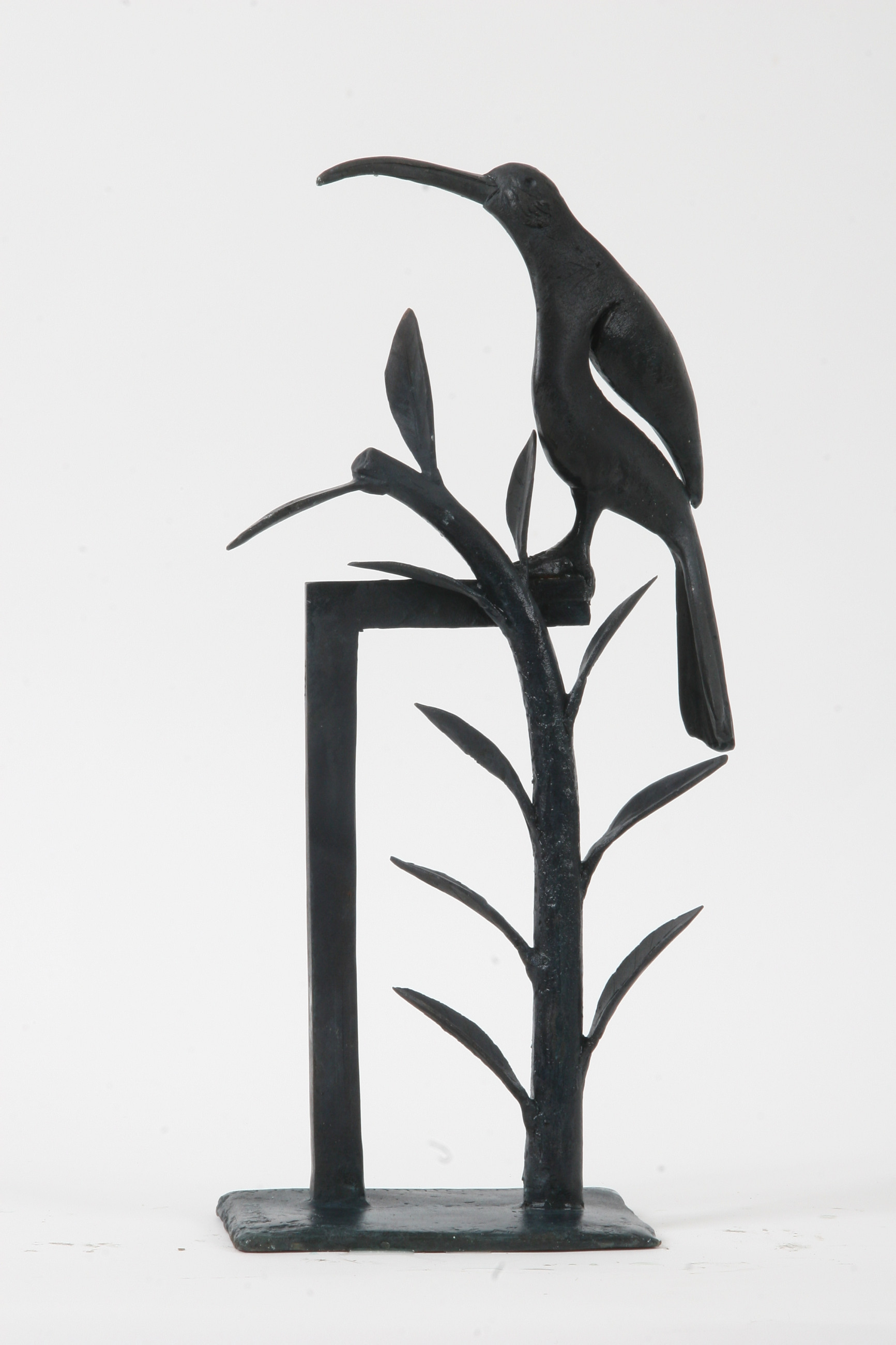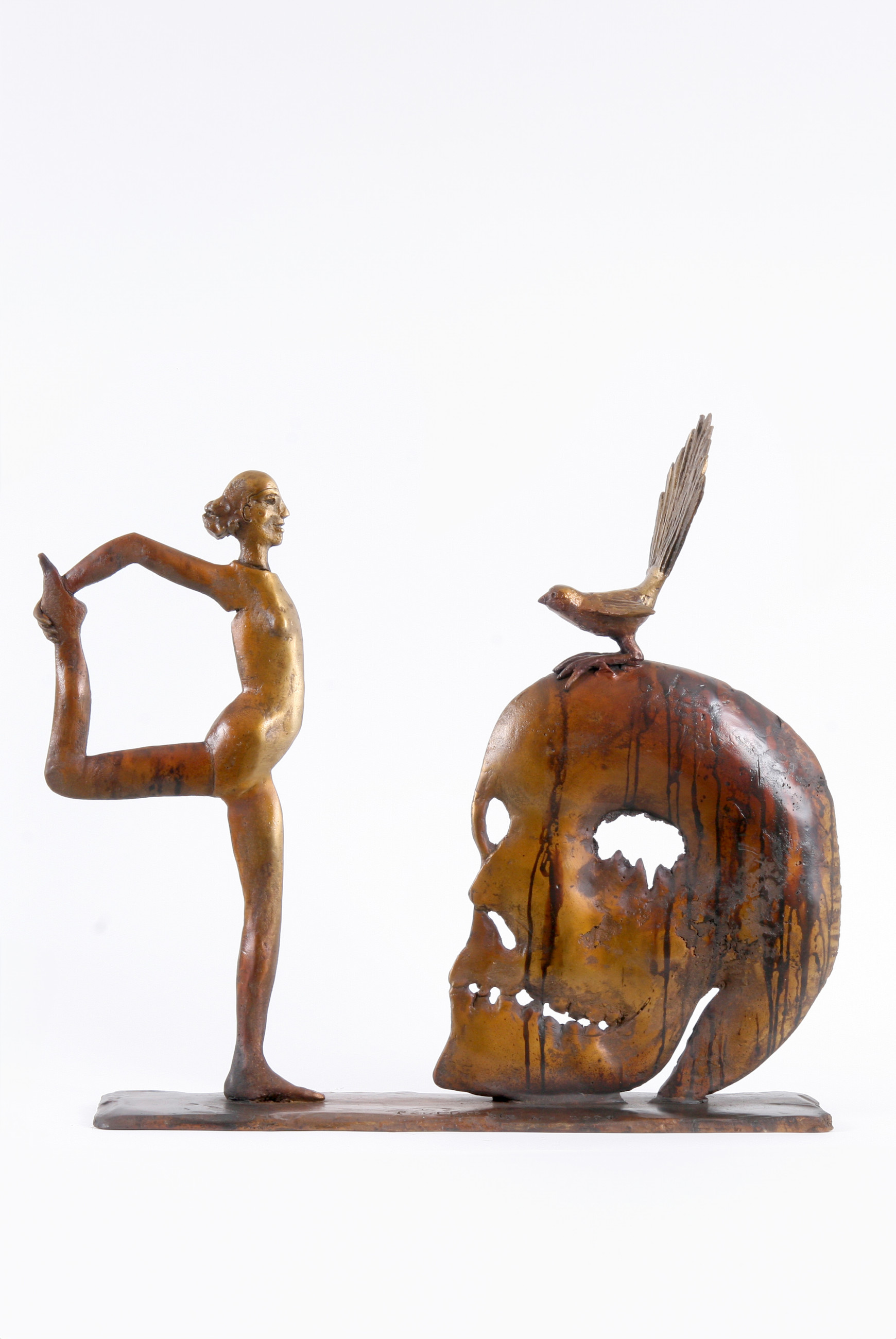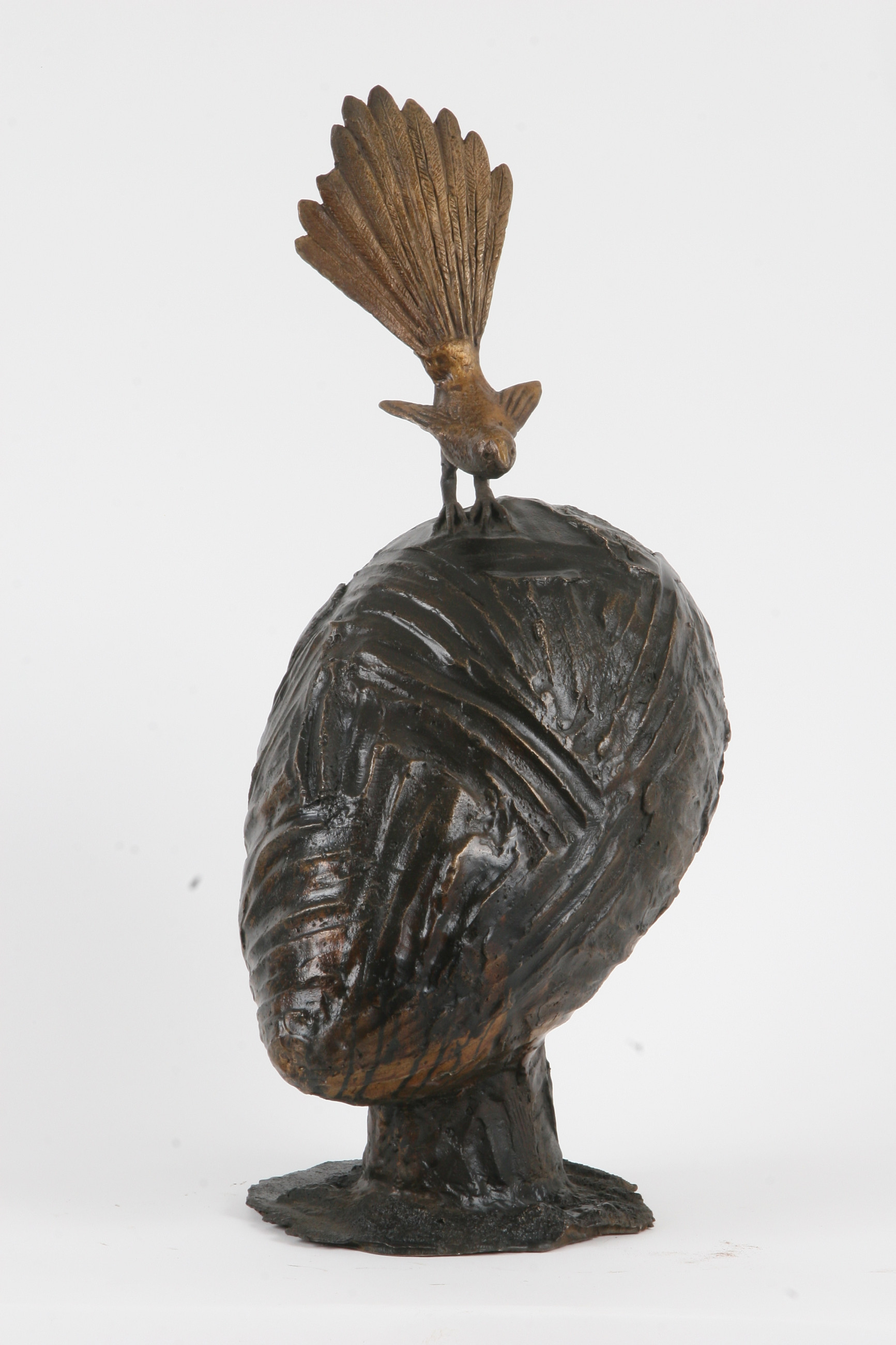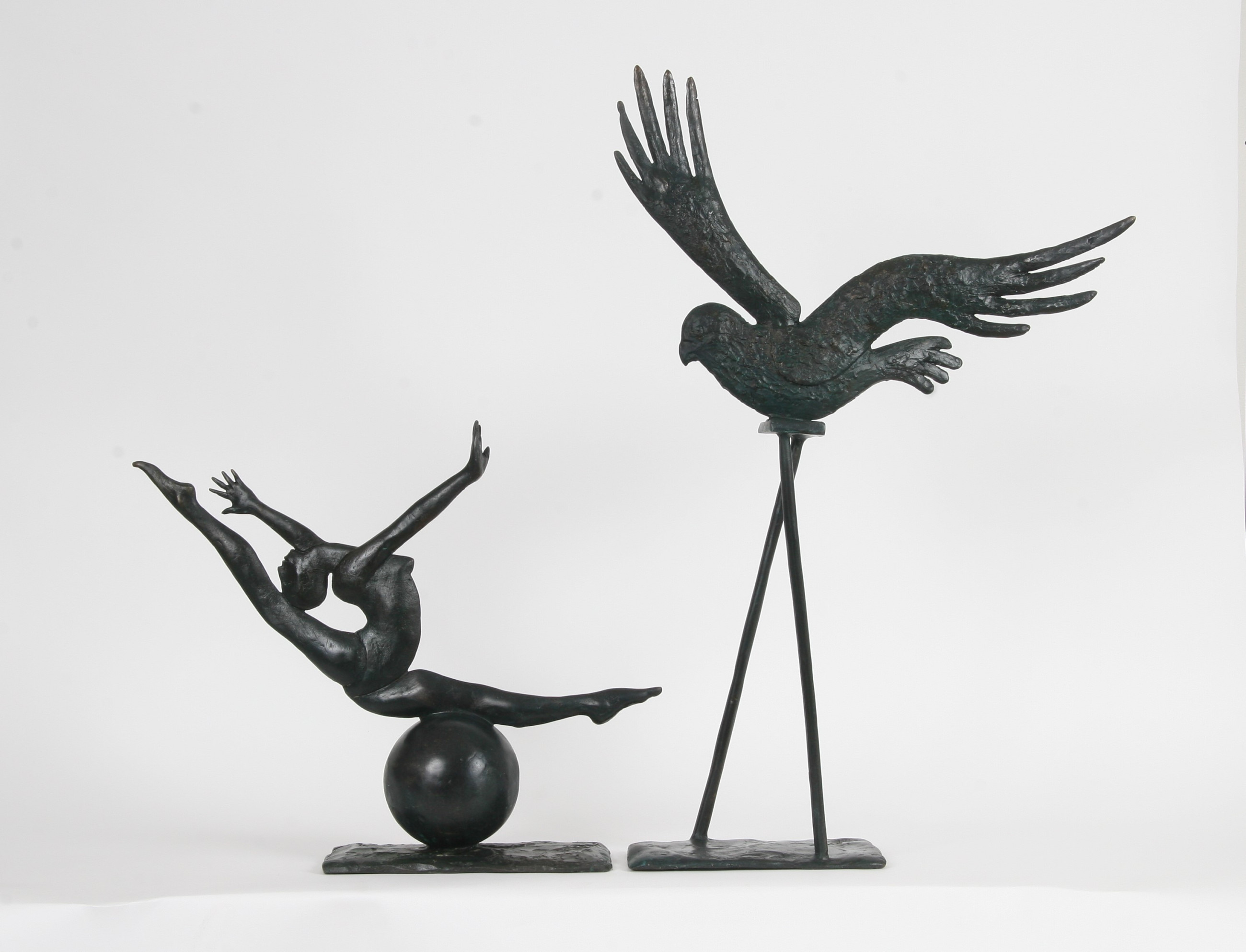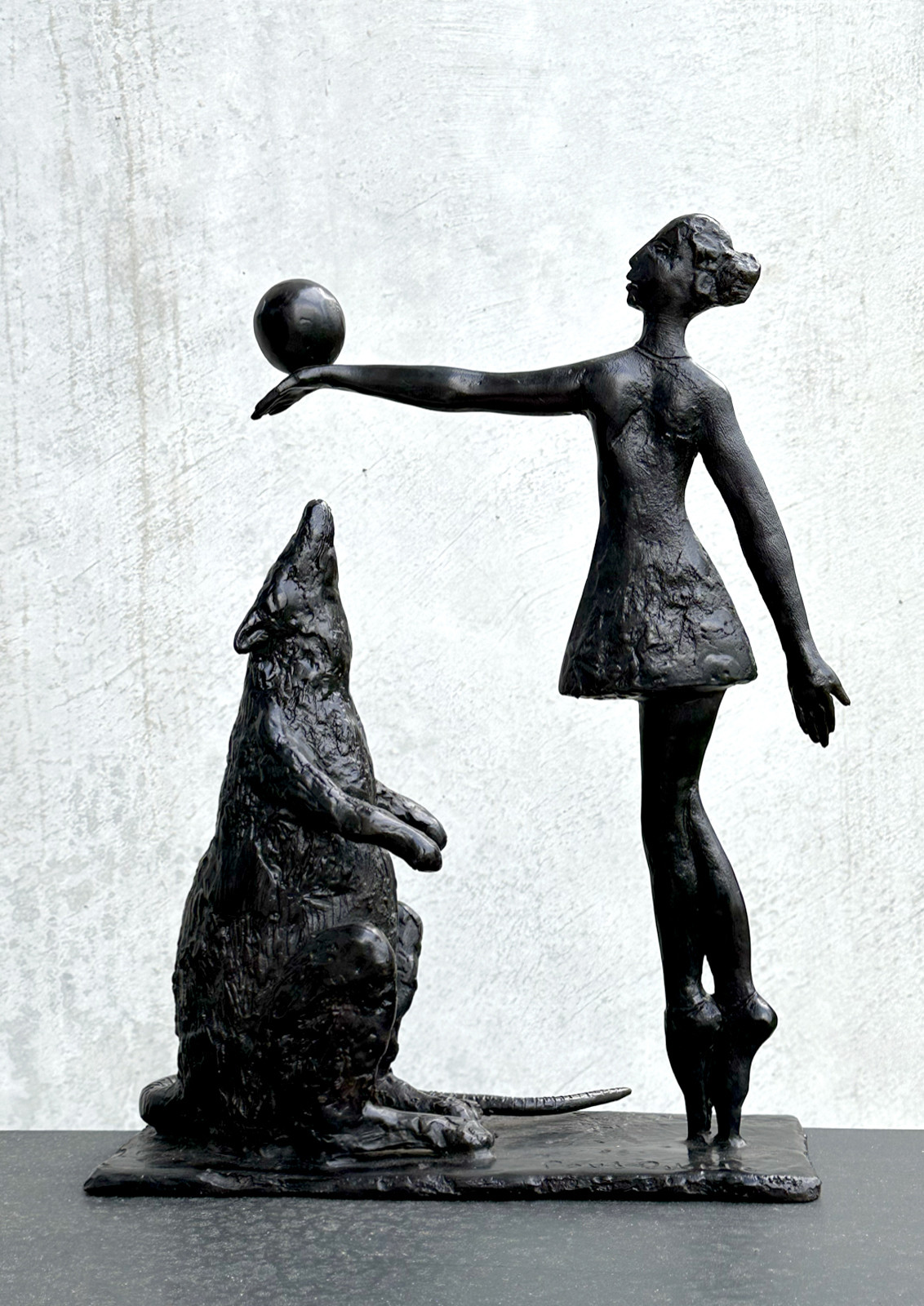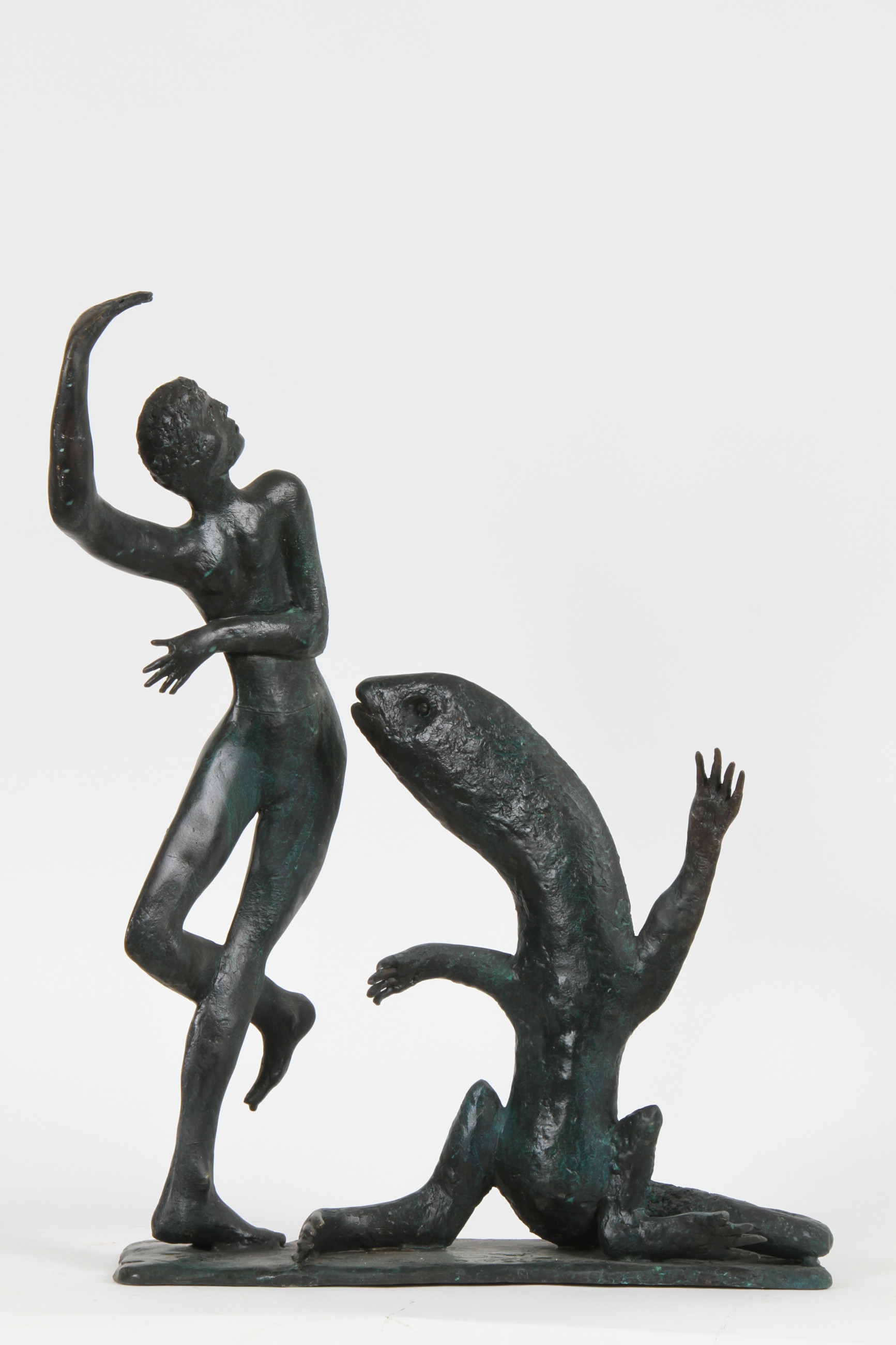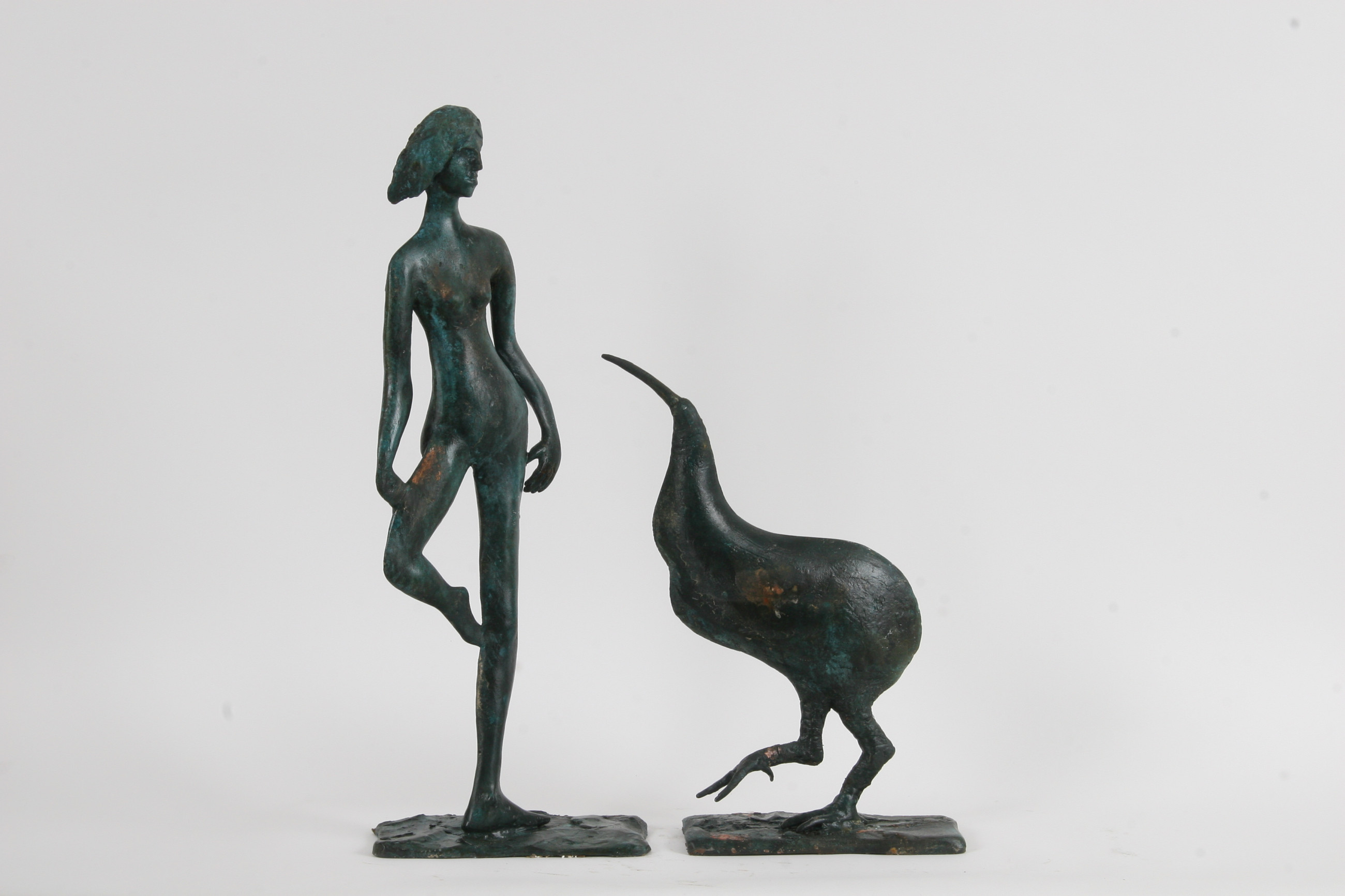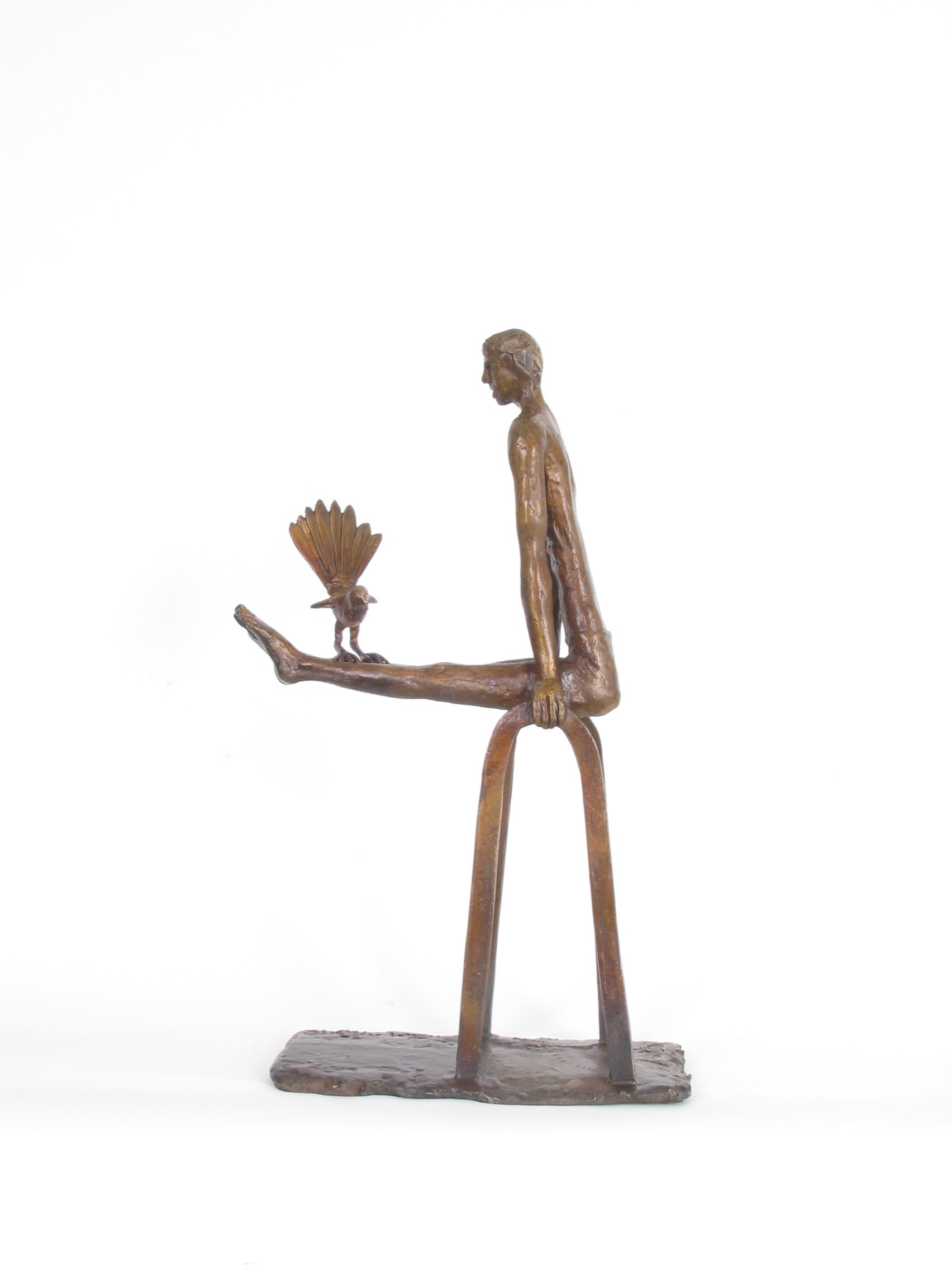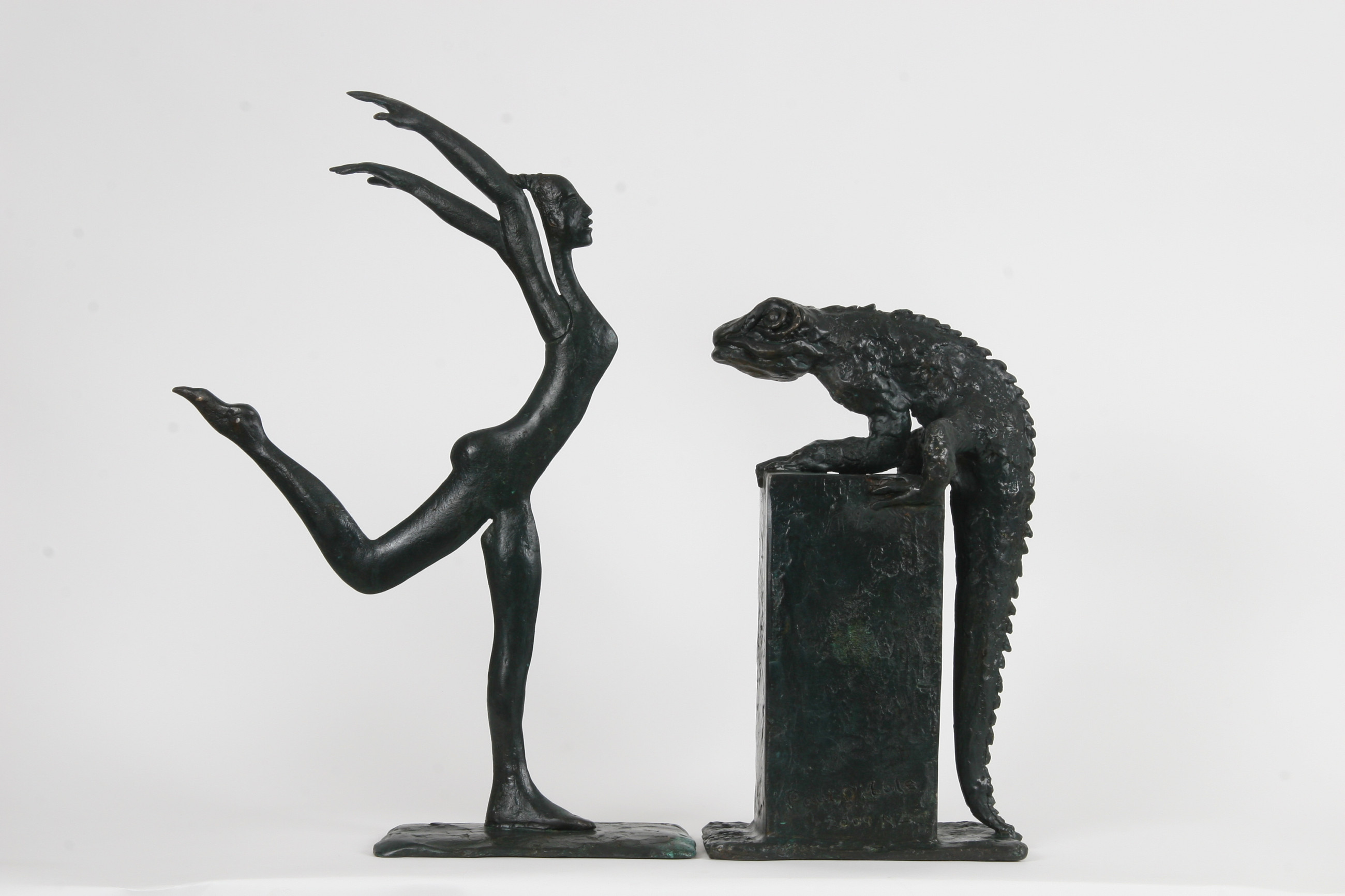March 2 - March 27, 2010 The Dance
March 2 - March 27, 2010 The DanceSolo, Page Blackie Gallery, Wellington
Text
Best known for his major installation, Southern Stand, the New Zealand War Memorial in Hyde Park Corner, London, Paul Dibble is set to unveil his new exhibition of bronze-cast, endangered native species, this time in the heart of New Zealand’s capital.
Dibble will be in Wellington to open his exhibition entitled ‘The Dance’, at Page Blackie Gallery on 2 March. Page Blackie co-Directors Marcia Page and James Blackie say, “‘The Dance’ creates an opportunity for the people of Wellington to be able to view a remarkable body of Paul Dibble sculptures. These works highlight the artist’s ongoing environmental concerns, featuring bronze ballerinas dancing with kiwi, tuatara and huia.”
As the decade rolls onto the first ten from the millennium Paul Dibble’s new sculptures study youth and death with a series of playful, yet thoughtful, artworks that feature a menagerie of dancers, acrobats, skulls, birds and other animals. Whether these new works are just a natural development precipitated by time, or whether the events of the death of a colleague from his students days and a mother in the same six months may have contributed to this new series is impossible to say. But these are a reflection on the triumph of youth, on age and on time passing.
The gymnasts are full of their youth, with their impressive antics; holding themselves rigid on rings, doing single arm handstands and impossible jumps (death defying you could say); but also with an inward pre-occupation. They are more fluid than would be expected from the media of bronze. With expansive gesture and concentration they ignore many of their companions even if one may be a looming skull.
Some show less disdain either by showing off (as with the mad dancer with flailing arms trying to impress her serious lizard audience in Whose Afraid) or compete (with the odd mimicry in Skink and Dancer) or perhaps deciding to play (as in Teaching Kiwis to Dance where a Pacific shaker leads a troupe).
The works are coloured with a range of patina. Some use a brown with black streaks running across the work with its own expressive vitality. Some are green as if grafted from part of the bush itself, the forms softened like with moss grown over a fallen log.
There are studies that express a resurrection of sorts, small celebrations of the return of birds, as numbers now soar from environmental rescue. Birds below, with our distinctive ground-dwellers, and above from forests that for many years were dead, on and around stands, miniature Serra’s relocated to New Zealand where the international structures have now sprouted small leaves as if they have sprung to life – these are sculptures that speak of hope and longevity.
Birds and acrobats, along with a few additions, as strange as the juxtapositions may be, they perform the dance of life.
